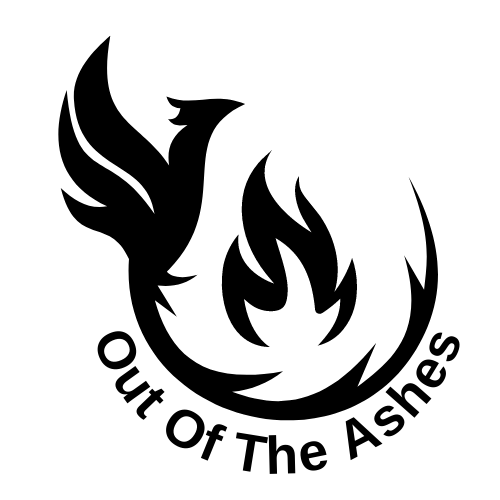Recognizing Abuse: Signs & Precursors

Written by Brooke Hamel
Abuse in intimate relationships often begins subtly, making it difficult for victims and those around them to recognize the warning signs before the situation escalates. Recent research by Charlot, Joel, and Campbell (2025) has identified behaviors that serve as predictors of intimate partner violence (IPV). This article will explore these warning signs, common symptoms of abuse, and how to support those who may be affected.


Understanding the Precursors to Abuse
Charlot et al. (2025) conducted a study to identify non-abusive behaviors that strongly predict later abusive actions. The researchers found that several early relationship behaviors were significantly associated with future abuse, including:
-
Jealousy – A partner expressing extreme jealousy or possessiveness.
-
Checking whereabouts – Constantly monitoring where their partner is or whom they are with.
-
Extreme charm – Using excessive flattery or love-bombing to establish control.
-
Seeking to be the center of attention – Always needing to dominate conversations and social situations.
Important Disclosure: While these behaviors may indicate a risk factor for abuse, they can also be signs of trauma, insecurity, or underlying mental health concerns. It should not be assumed that a person exhibiting these behaviors is an abuser. Instead, these warning signs suggest that something deeper may be going on, and the individual may benefit from professional therapy. However, if these behaviors escalate into controlling, coercive, or harmful actions, they should be taken seriously as potential indicators of abuse.
Key Behaviors That Predict Abuse
The study found that certain behaviors had a strong predictive validity for IPV. The most significant predictors across multiple studies included:
- Sexual coercion: Engaging in sexual activity despite lack of consent or enthusiasm.
- Entitlement and arrogance: A partner displaying a belief that they are superior or more deserving.
- Public humiliation: Creating uncomfortable situations in public settings.
- Disregard for reasoning or logic: Dismissing a partner’s perspective simply because it does not align with their own.
- Negative reactions to boundaries: Resenting or lashing out when told “no.”
- Resentment over accountability: Displaying anger or resistance when questioned about their behavior.
These behaviors suggest a pattern of manipulation and control, which may escalate into more severe forms of abuse over time.


Recognizing the Signs of Domestic Abuse
According to resources like the National Domestic Abuse Hotline (https://www.thehotline.org) and Women’s Aid (https://www.womensaid.ie), common warning signs of abuse include:
Emotional and Psychological Abuse
- Belittling, insulting, or shaming, particularly in public.
- Controlling access to money, food, or communication.
- Extreme jealousy or accusations of infidelity without cause.
- Pressuring or coercing a partner into sexual activities.
Behavioral and Physical Signs in Victims
- Anxiety, low mood, or withdrawal from social interactions.
- Difficulty concentrating, memory problems, or making frequent mistakes.
- Visible injuries with unlikely explanations.
- Avoidance of conversations about their relationship.
Supporting Someone Experiencing Abuse
Nurses, educators, and colleagues may encounter individuals experiencing IPV. According to Nursing Management (2021), signs that a colleague may be affected include increased absences, difficulty focusing, and a reluctance to discuss personal life. Supportive actions include:
- Offering a safe space for conversation without judgment.
- Encouraging them to seek professional help, such as counseling or legal aid.
- Providing resources, such as contact information for shelters or hotlines.
- Respecting their choices and timeline for seeking help, as leaving an abusive relationship is often complex and dangerous.

Final Thoughts
It is important to acknowledge that some of the behaviors listed, such as jealousy or difficulty accepting accountability, can sometimes stem from personal trauma. However, when these behaviors are persistent, escalate over time, or are coupled with other warning signs, they may indicate a deeper problem. If you or someone you know is experiencing multiple warning signs, seeking professional support is crucial.
If it is safe to do so, couples counseling may be an option in cases where both partners are committed to addressing past traumas and developing healthier relationship patterns. However, if there is a pattern of control or intimidation, individual support and safety planning should take priority.
For immediate help, please contact the National Domestic Violence Hotline at 1-800-799-7233 or visit https://www.thehotline.org.
References
Charlot, N., Joel, S., & Campbell, L. (2025). The predictive validity of intimate partner violence warning signs. Social Psychological & Personality Science, 16(2), 192–201. https://doi.org/10.1177/19485506231209076
How to spot the signs of domestic abuse and support colleagues who may be affected. (2021). Nursing Management (2014+), 28(1), 14-17. https://doi.org/10.7748/nm.28.1.14.s12

Written by Brooke Hamel
Related Articles
Related
Beyond the Pain: Side Effects of Abuse
Abuse leaves deep emotional, psychological, and even physical scars that persist long after the abusive situation has ended. Survivors often find themselves struggling with symptoms they never expected—PTSD, anxiety, depression, trust issues, and even behavioral...
Creating A Safety Plan
A safety plan is a personalized, practical strategy designed to enhance an individual's safety while experiencing abuse, preparing to leave an abusive situation, or after leaving. This plan includes vital information tailored to one's unique circumstances, helping to...
